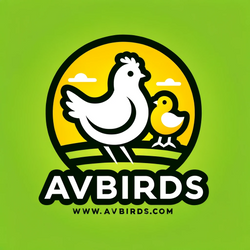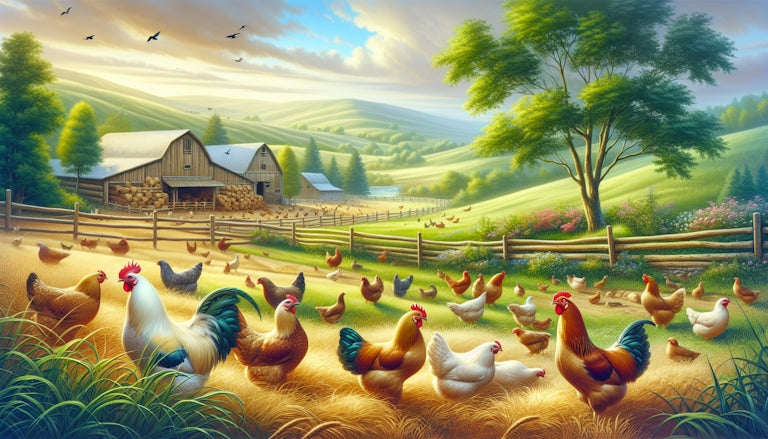Understanding Dual-Purpose Chickens
Dual-Purpose Birds Defined
Dual-purpose chickens pull double duty. They lay a steady stream of eggs and grow into flavorful meat birds. That means fewer breeds to manage and a more streamlined backyard flock.
Egg and Meat Traits
These birds strike a balance between egg-laying and meat production. You’ll get around 150–280 eggs per year, depending on the breed, plus hearty carcasses when it’s time for a roast. Compared with specialized layers or fast-growing broilers, they mature at a steady pace and tend to put on muscle gradually.
Seasonal Laying Performance
Dual-purpose breeds often handle cold snaps better than lightweight layers. Their sturdy frames help them keep laying through winter’s chill and conserve energy for spring production Chicken Scratch NY.
Pros and Cons
- Pros
- Fewer breeds to care for – eggs and meat from one flock
- Hardiness in varied climates
- Ethical edge over separate layer and broiler systems
- Cons
- Slower growth than commercial meat birds
- Lower egg output compared with dedicated layers
- Higher feed costs per pound of meat
Popular Dual Breeds
Key Stats at a Glance
| Breed | Eggs/Year | Weight (lbs) | Traits |
|---|---|---|---|
| Buff Orpington Chicks | 250–280 | 8–10 | Calm, broody tendencies |
| Black Australorp Chicks | 200–250 | 7–10 | Fast growers, great foragers |
| Brahma | 150–200 | 9–12 | Cold hardy, feathered legs |
Data from Omlet
Cite: Omlet
Breed Selection Tips
- Match flock size to your backyard space
- Pick a mix of lighter and heavier breeds for varied egg colors and meat cuts
- Consider temperament if kids or pets mingle with the flock
- Order day-old or pullets based on your experience and time commitment
Buying Dual-Purpose Chicks
Choose Chicks or Pullets
Not sure if you need day-old chicks or started pullets?
- Day-old chicks give you the full raising experience and often cost less up front. Check out available day-old chicks for sale.
- Started pullets (young hens 12–18 weeks old) begin laying sooner and skip brooder work. See started pullets for sale.
Ordering and Shipping
- Minimum orders can be as low as three chicks in spring and summer, eight in winter.
- Many hatcheries include a free GroGel packet when you order three or more chicks for that extra hydration boost Meyer Hatchery.
- Look for clear shipping windows, live-arrival guarantees, and heat-pack options to protect chicks in transit. Explore shipping live chicks and minimum order chicks policies.
Assess Hatchery Reputation
- Read customer reviews for arrival condition and communication
- Seek hatcheries with transparent biosecurity and vaccination protocols
- Consider hatcheries that practice sustainable farming methods Freedom Ranger Hatchery
Planning Your Brooder Setup
Brooder Supplies You Need
- Heat lamp or ceramic heater
- Safe flooring or bedding
- Feeding station and waterer sized for chicks
- Check out chick brooder supplies for all the essentials
Feeder and Waterer Options
- Cup feeders reduce waste
- Nipple waterers keep bedding dry
- Compare styles and capacities on chicken feeders and waterers
Space and Cleanliness
- Allow at least 1 square foot per chick at start, more as they grow
- Keep ventilation steady but free of drafts
- Clean feeders and waterers daily to prevent disease
Ensure Chick Health
Temperature Management
- Start chicks at 95°F and lower by 5°F a week until fully feathered
- Incorporate breeds from both hot and cold climates, like cold hardy chickens and heat hardy chickens, for balanced resilience
Preventive Care
- Vaccinate early against common poultry diseases
- Deworm and monitor for lice or mites
- Establish a secure coop to limit wild-bird contact
Key Takeaways and Next Steps
- Dual-purpose chickens give you eggs and meat from one versatile flock
- Compare top breeds like Buff Orpingtons, Australorps, and Brahmas for your goals
- Decide between day-old chicks or pullets based on your schedule and space
- Plan your brooder carefully with proper heat, feed, and water supplies
- Prioritize health with temperature control and preventive care
Ready to get started? Pick your breeds, order your chicks or pullets, and share your raising journey in the comments below.

